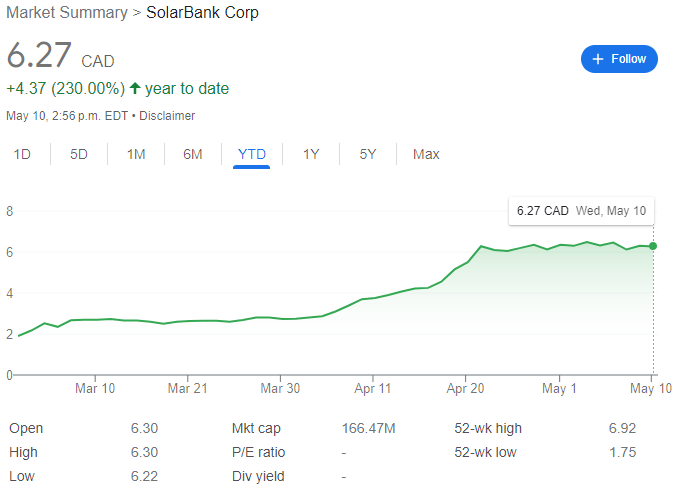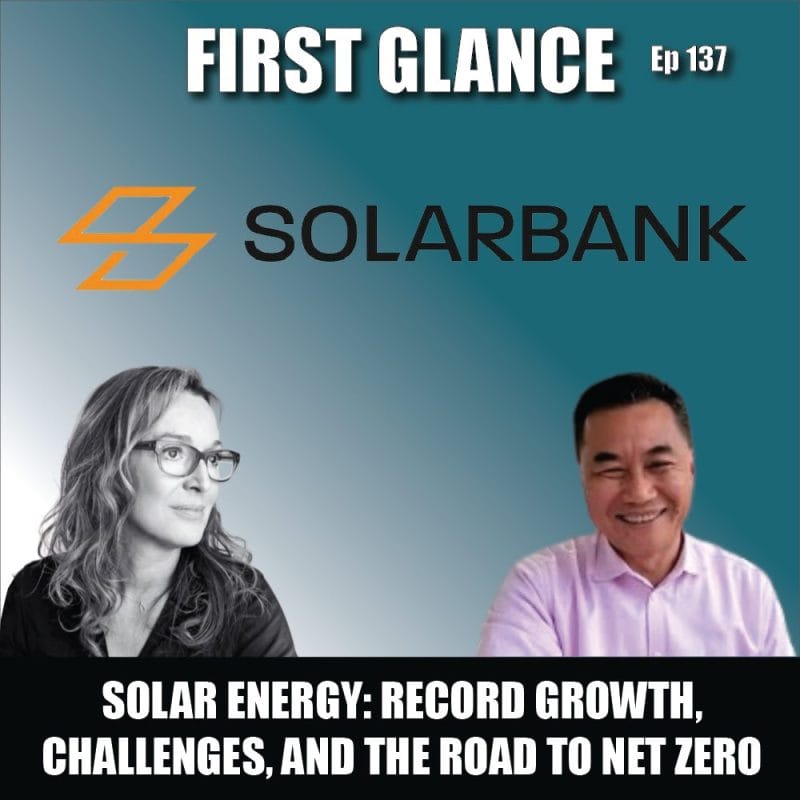The dawn of a new era in solar energy is upon us. Last year, solar photovoltaic (PV) generation recorded an unprecedented increase of 179 TWh, a surge of 22%, culminating in an aggregate of over 1,000 TWh. This significant expansion positioned solar PV as the runner-up among renewable technologies in terms of absolute generation growth in 2021, with only wind taking the lead. As we commemorate this momentous achievement, we must also acknowledge the forthcoming challenges and opportunities on the horizon.
“The solar industry is not just fighting climate change; it’s also offering a compelling economic opportunity for ethical investors,” stated Dr. Richard Lu, President, CEO, and Director of SolarBank Corporation. In an engaging dialogue with Jody Vance on ‘First Glance’, Dr. Lu painted a vivid picture of SolarBank’s evolution from a modest beginning in Ontario to its present-day expansive projects spanning North America. The trajectory of the company’s growth serves as a microcosm of the overall industry’s advancement, underlining the immense potential of solar power as a sustainable energy alternative.
But the journey towards a solar-powered future doesn’t stop here. Solar PV is swiftly ascending to become the most cost-effective choice for new electricity generation across the globe. This cost advantage is poised to entice a surge in investments in the forthcoming years. However, in order to fulfill the objectives of the Net Zero Emissions by 2050 Scenario, an average annual generation growth of 25% between 2022 and 2030 is paramount. This equates to an over threefold surge in annual capacity deployment by 2030, a daunting challenge that mandates an enhanced policy ambition and a collective effort from public and private sectors alike.
Emerging and developing nations, in particular, encounter distinctive challenges pertaining to grid integration, policy formation, regulation, and financing. Overcoming these obstacles is vital to fully realize the massive potential of solar energy.
China, the United States, and the European Union are currently spearheading the growth in solar PV generation. China solely contributed to approximately 38% of the increase in solar PV generation in 2021, primarily due to substantial capacity additions in 2020 and 2021. “Despite adversities such as the Covid-19 pandemic, supply chain disruptions, and commodity price fluctuations experienced last year, solar PV showcased remarkable resilience and achieved another record annual increase in capacity, amounting to nearly 190 GW,” Dr. Lu emphasized. This resilience is anticipated to stimulate further growth in electricity generation in 2022.
Regarding capacity additions, utility-scale plants took the lead in 2021, accounting for 52% of the global solar PV capacity. However, this is the lowest share since 2012, as attractive policy incentives have led to record distributed PV capacity additions in residential (28%) and commercial and industrial (19%) sectors, particularly in China, the United States, and the European Union.
The solar energy revolution is in full swing. The escalating rise in solar PV generation serves as a testament to its potential in guiding the transition to a sustainable energy future. But, to achieve the ambitious goals of the Net Zero Scenario, a united effort from stakeholders worldwide is imperative. “With the right policies, investments, and innovations in place, the sun will shine even brighter on our energy landscape,” concluded Dr. Lu.
SolarBank Corporation currently trades at $6.27 CAD per share for a market cap of $166.47 million.


